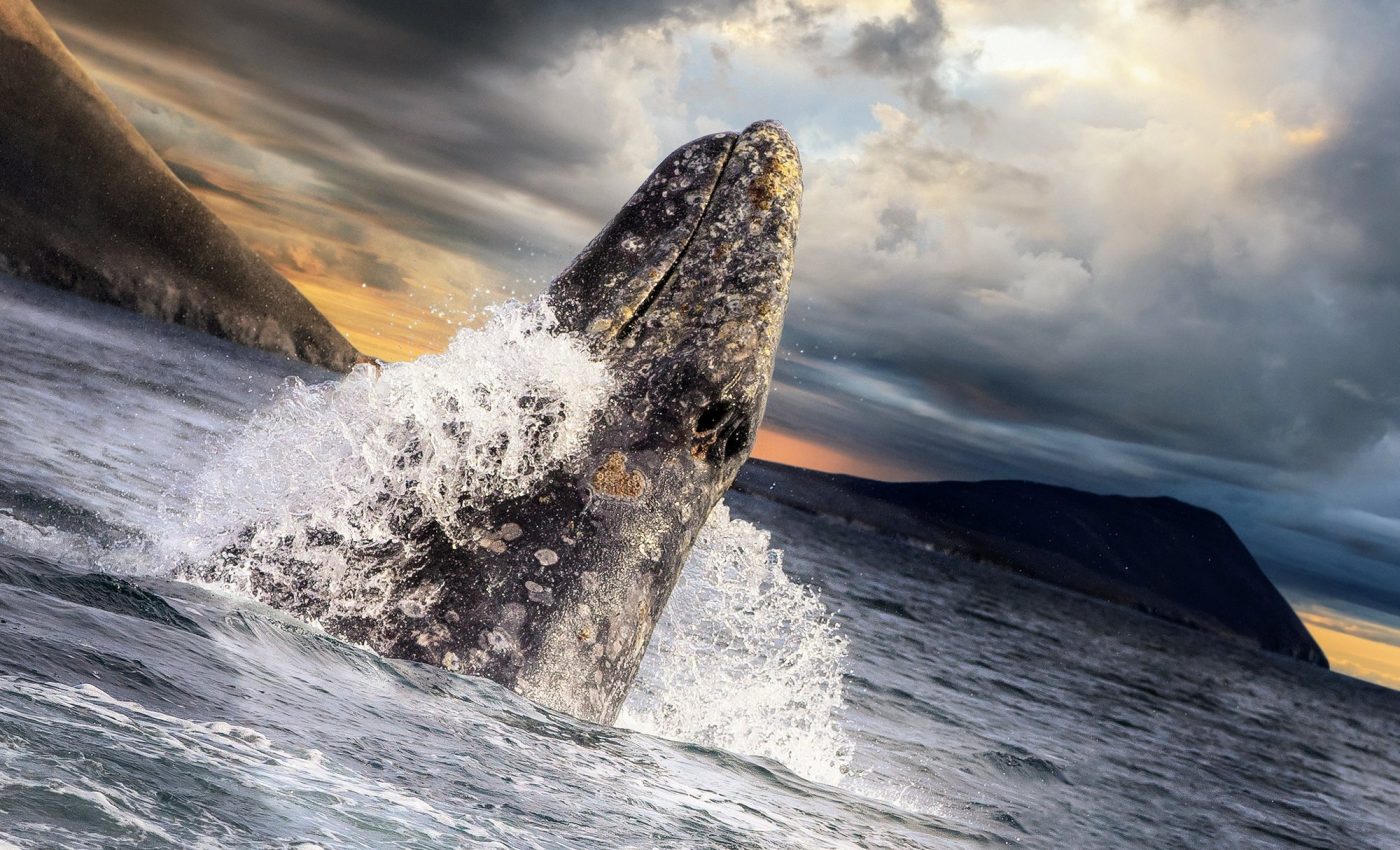
Gray whales in the North Pacific are shrinking in size
Gray whales that spend their summers feeding off the Pacific Northwest coast have significantly decreased in body length since around 2000, according to a new study led by Oregon State University (OSU). This reduction in size could have serious implications for the health and reproductive success of the gray whales and raises concerns about the state of the ecosystem.
Early warning sign of population decline
“This could be an early warning sign that the abundance of this population is starting to decline, or is not healthy,” said co-author K.C. Bierlich, an assistant professor at OSU’s Marine Mammal Institute in Newport.
“And whales are considered ecosystem sentinels, so if the whale population isn’t doing well, that might say a lot about the environment itself.”
Pacific Coast Feeding Group
The experts focused on the Pacific Coast Feeding Group (PCFG), a small subset of about 200 gray whales from the larger Eastern North Pacific (ENP) population of around 14,500.
Unlike the majority that migrate to the Arctic, this subgroup stays closer to shore along the Oregon coast, feeding in warmer, shallower waters.
Smaller whales with worse body condition
Recent OSU studies have shown these whales are smaller and in worse body condition than their ENP counterparts, with the current study revealing a further decline in size over recent decades.
The Marine Mammal Institute’s Geospatial Ecology of Marine Megafauna (GEMM) Lab has been studying this subgroup since 2016, utilizing drones to measure their size.
Analyzing images from 2016-2022 of 130 individual whales, researchers determined that a gray whale born in 2020 is expected to be 1.65 meters shorter as an adult than one born before 2000. This accounts for a reduction of over 13% of their total length, significant for whales that grow to be 38-41 feet long.
How does smaller size affect whales?
“In general, size is critical for animals,” said lead author Enrico Pirotta, a researcher at the University of St. Andrews in Scotland. “It affects their behavior, their physiology, their life history, and it has cascading effects for the animals and for the community they’re a part of.”
Smaller whale calves may struggle with survival post-weaning, and smaller adult whales face reproductive challenges.
“With them being smaller, there are questions of how effectively these PCFG gray whales can store and allocate energy toward growing and maintaining their health. Importantly, are they able to put enough energy toward reproduction and keep the population growing?” Bierlich said.
Researchers are also concerned about the impact of scarring from boat strikes and fishing gear entanglement, which could be exacerbated by the whales’ smaller size and lower energy reserves.
Gray whale size and ocean cycles
The study also investigated ocean environmental patterns that regulate food availability for these whales, focusing on cycles of “upwelling” and “relaxation” in the ocean. Upwelling brings nutrients to shallower waters, while relaxation periods keep these nutrients in the light-rich areas for plankton growth, which is essential for the whales’ prey.
“Without a balance between upwelling and relaxation, the ecosystem may not be able to produce enough prey to support the large size of these gray whales,” said co-author Leigh Torres, the director of the GEMM Lab at OSU.
The decline in whale size coincided with changes in these ocean cycles. “We haven’t looked specifically at how climate change is affecting these patterns, but in general, we know that climate change is affecting the oceanography of the Northeast Pacific through changes in wind patterns and water temperature,” Pirotta said.
Further research is needed
With the knowledge that PCFG gray whales’ body size is decreasing, researchers are now probing the potential downstream consequences and contributing factors.
“We’re heading into our ninth field season studying this PCFG subgroup. This is a powerful dataset that allows us to detect changes in body condition each year, so now we’re examining the environmental drivers of those changes,” Bierlich concluded.
The study is published in the journal Global Change Biology.
—–
Like what you read? Subscribe to our newsletter for engaging articles, exclusive content, and the latest updates.
Check us out on EarthSnap, a free app brought to you by Eric Ralls and Earth.com.
—–













